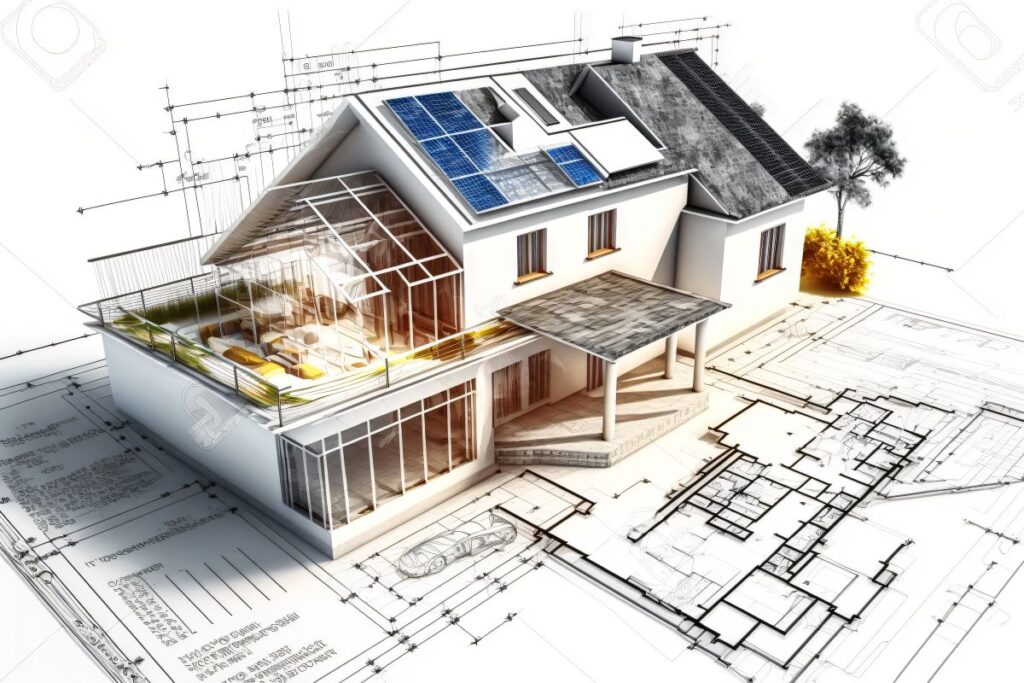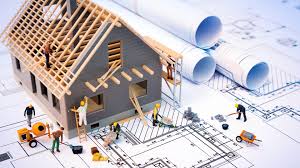Building a house is a dream many cherish—a place to call one’s own, a sanctuary of comfort and security. However, turning that dream into reality requires meticulous planning and thoughtful execution. From conceptualization to completion, every step in the process demands careful consideration. When planning a house construction project, it’s crucial to include provisions for construction site cleanup to ensure the safety and efficiency of the building process. So, how do you plan a house construction? Let’s delve into the art and science behind this intricate endeavor.
House Construction: Define Your Vision
Every successful construction project starts with a clear vision. Begin by outlining your requirements and preferences. Consider the size of the house, the number of rooms, architectural style, and special features you desire. This initial phase sets the foundation for the entire project and helps in making informed decisions later on.
At the heart of every successful house construction project lies a clear and compelling vision. Before laying the first brick or pouring the foundation, it’s essential to define your aspirations and requirements for your future home. Take the time to envision the kind of space you want to inhabit—a place that reflects your lifestyle, values, and personal taste. Consider factors such as the size and layout of the house, architectural style, desired amenities, and special features that will enhance your daily living experience. By articulating your vision with clarity and specificity, you lay the groundwork for a construction project that aligns perfectly with your dreams and aspirations.

Set a Realistic Budget
Financial planning is crucial. Determine your budget based on your resources and financial capabilities. Factor in not only the construction costs but also additional expenses such as permits, taxes, and contingencies. It’s essential to strike a balance between your aspirations and financial constraints to avoid overspending or compromising on quality.
Setting a realistic budget is a foundational step in the house construction process. It involves a comprehensive evaluation of your financial resources and goals to determine the feasibility of your project. By carefully assessing your income, savings, and borrowing capacity, you can establish a budget that aligns with your financial capabilities while accommodating the desired scope and quality of the construction. It’s essential to account for not only the direct construction costs but also indirect expenses such as permits, taxes, and contingencies. Striking a balance between your aspirations and financial constraints ensures that your construction project remains on track and avoids potential budgetary pitfalls along the way.
Choose the Right Location
Location is paramount in real estate. Selecting the perfect site involves assessing factors like accessibility, proximity to amenities, neighborhood ambiance, and environmental considerations. Conduct thorough research and consult with experts to ensure the chosen location aligns with your lifestyle and long-term plans.
Choosing the right location is akin to laying the cornerstone of your dream home. It’s not just about the physical coordinates; it’s about finding a place that resonates with your lifestyle and aspirations. Start by considering accessibility—is it conveniently located near schools, workplaces, and amenities? Assess the neighborhood ambiance—is it peaceful, vibrant, or somewhere in between? Environmental factors like sunlight exposure, prevailing winds, and topography also play a role. Conduct thorough research, visit prospective sites, and consult with real estate agents to make an informed decision. Remember, a well-chosen location not only enhances your quality of life but also influences the property’s value and long-term appreciation.
Engage Professionals
Building a house is a collaborative effort that requires expertise from various professionals. Hire an architect to design your dream home, ensuring it meets your functional and aesthetic needs while complying with building codes and regulations. Additionally, enlist the services of a reputable contractor who can bring the design to life with precision and quality craftsmanship.
Engaging professionals is a pivotal step in the house construction process. Architects, engineers, and contractors bring invaluable expertise to the table, translating your vision into tangible designs and structures. Architects conceptualize and design the layout, ensuring functionality, aesthetics, and compliance with building codes. Engineers provide structural analysis and solutions, guaranteeing the safety and integrity of the construction. Contractors, skilled in project management and construction techniques, execute the plans with precision and efficiency. Collaborating with these professionals ensures that your project progresses smoothly, stays within budget, and meets quality standards. Their collective knowledge and experience streamline the construction journey, turning your dreams into reality.
Design and Development
Work closely with your architect to refine the design based on your vision and budget. Consider aspects such as layout, structural integrity, energy efficiency, and material selections. Strive for a balance between form and function, incorporating innovative solutions and sustainable practices where possible. Regular consultations and revisions are essential to fine-tune the design to perfection.
In the stage of Design and Development, the blueprint of your dream home begins to take shape. Collaborating closely with an architect, you’ll refine your vision, balancing aesthetic appeal with practical functionality. Discussions will revolve around the layout, structural integrity, and energy efficiency of the design. Material selections play a crucial role, with considerations for durability, sustainability, and cost-effectiveness. This phase is characterized by creativity and innovation, as you explore various design possibilities and incorporate personalized touches that reflect your unique style and preferences. Regular consultations and revisions ensure that the final design not only meets your expectations but also complies with building codes and regulations, laying the groundwork for a successful construction project.
Obtain Necessary Permits
Before breaking ground, obtain all required permits and approvals from local authorities. This process may involve submitting detailed plans, environmental assessments, and paying fees. Compliance with regulations ensures the safety and legality of your construction project and prevents potential delays or penalties down the line.
Procurement and Construction
With permits in hand, it’s time to kickstart the construction phase. Procure materials, hire subcontractors, and establish a construction schedule. Effective project management is key to keeping the construction process on track, monitoring progress, and addressing any issues promptly. Regular site visits and communication with the construction team foster transparency and accountability.
Quality Control and Inspections
Maintain rigorous quality control throughout the construction process to ensure workmanship meets the highest standards. Schedule regular inspections at key milestones to assess compliance with building codes, structural integrity, and adherence to specifications. Address any deficiencies promptly to avoid costly rework or safety hazards.
Finishing Touches
As construction nears completion, focus on the finishing touches that bring your vision to life. This includes interior finishes, landscaping, and installation of fixtures and appliances. Pay attention to detail and craftsmanship to create a home that reflects your personality and style.
In the realm of house construction, the “Finishing Touches” phase is akin to adding the final strokes to a masterpiece. It’s the stage where every detail, no matter how small, contributes to the overall ambiance and functionality of the home. From selecting the perfect paint colors to installing fixtures and fittings, every decision is deliberate and designed to enhance the aesthetic appeal and comfort of the living space. This phase is where the house truly starts to feel like a home, as personal touches and decorative elements come together to reflect the homeowner’s taste and personality. Whether it’s choosing the right flooring, adding crown molding, or landscaping the garden, attention to detail is paramount, ensuring that the finished product is nothing short of exceptional.
Final Inspections and Handover
Before moving in, conduct final inspections to verify that all work has been completed to your satisfaction and meets regulatory requirements. Address any outstanding issues with the contractor and obtain necessary certifications and warranties. Once everything is in order, it’s time to celebrate the completion of your dream home and embark on the next chapter of your life.
Conclusion
Planning a house construction is a multifaceted endeavor that requires careful planning, coordination, and attention to detail. By defining your vision, setting a realistic budget, engaging professionals, and following a systematic approach, you can navigate the complexities of the construction process with confidence and turn your dream home into a reality. Remember, the journey may be challenging, but the end result—your very own sanctuary—is well worth the effort.







